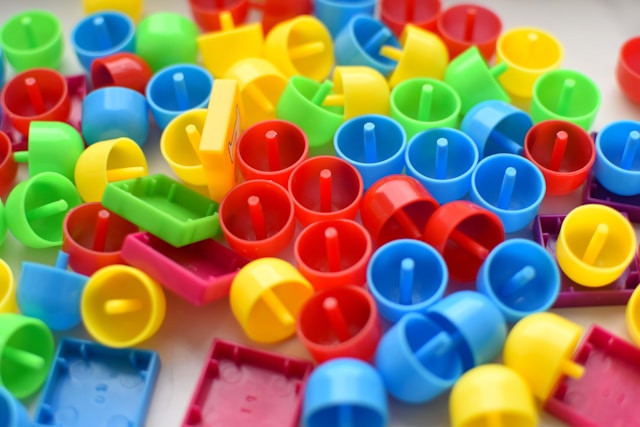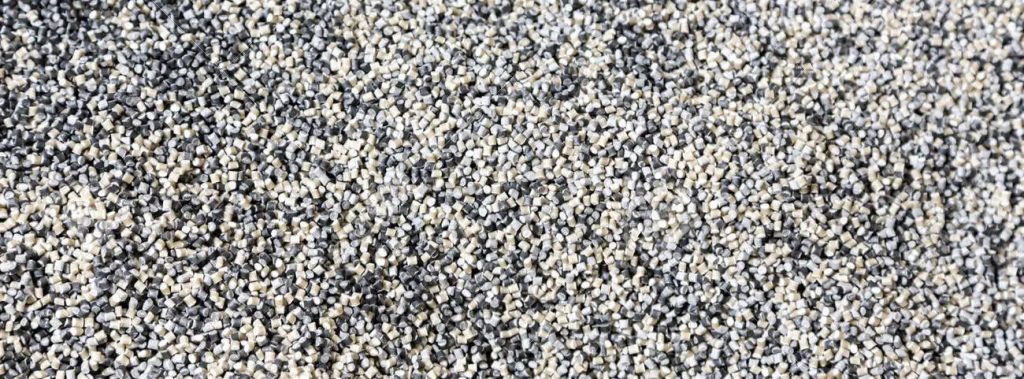Ultrasonic plastic welding is a powerful tool for joining plastic parts. This type of plastic welding uses intense high pressure and ultrasonic vibrations to weld parts seamlessly. The process is fast, clean, and creates strong, permanent bonds. Ultrasonic welding has many advantages over traditional bonding methods including bonding without the need for adhesives or fasteners. This makes this joining technique a preferred choice in several industries.
Successful ultrasonic welding of plastics relies significantly on material selection. Choosing the wrong plastic can lead to weak welds, wasted time, and wasted investments.
In this article, we will delve into why not all plastics are created equal for ultrasonic welding, and how to pick the perfect material for your project.

Types of Plastic Polymers
Plastic polymers can be broadly grouped into two main types, based on how they respond to heat. These groups are thermoplastics and thermosets. Knowing the distinctions between these two groups is crucial for understanding ultrasonic plastic welding.
Thermoplastics vs Thermosets for Ultrasonic Welding
Thermoplastics are the most common type and soften or melt when heated making them ideal for ultrasonic welding. This allows them to be moulded into shapes and then retain that shape when cooled. Thermoplastics are generally recyclable and some common examples include polycarbonate (PC), acrylonitrile butadiene styrene (ABS) and polystyrene (PS). Ultrasonic welding only works with thermoplastics.
Thermosets permanently change when heated, unlike thermoplastics. They harden and set into a fixed shape and cannot be melted or reshaped again. This makes thermosets unsuitable for ultrasonic welding. Some examples include polyurethane and epoxy resins and generally, thermosets cannot be recycled.
Amorphous vs. Semi-Crystalline Plastics
Weldable plastics can be divided into two categories; amorphous plastic and semi-crystalline plastic. The structure of these types of thermoplastic material affects their weldability.
Amorphous plastics have a random, disorganised molecular structure that makes it easier to transmit vibrations. This tangled, spaghetti-like structure allows them to soften gradually over a temperature range, making them generally easier to weld ultrasonically. The molecules absorb ultrasonic energy easily, converting it to heat for melting and fusing. Some examples include polypropylene, polyvinyl chloride (PVC) and polycarbonate (PC).
Semi-crystalline plastics, in contrast, have a more ordered, crystalline structure. They tend to have sharper melting points, requiring more precise control during welding. While they are still weldable, they might be a bit more challenging to bond.
It’s important to note that not all thermoplastics weld successfully.

Thermoplastic Properties to Consider When Selecting for Ultrasonic Welding
There are several thermoplastic material properties that dictate the success of ultrasonic welding.
Melt temperature, for instance, impacts the energy input and the efficiency of the process, as higher melt temperatures require more energy. Glass transition temperature (TG) is another crucial consideration, as materials with similar TG values tend to weld better together.
Additionally, the melt flow index (MFI) influences weldability. Materials having similar MFI values are more compatible. When it comes to fillers and additives, although they are beneficial for enhancing certain material properties, can hinder this type of plastic welding process if not carefully considered.
Tips for Choosing the Right Thermoplastic Materials
When selecting materials for ultrasonic welding, prioritising similar materials is key to achieving the best results. Whenever possible, welding identical thermoplastics provides the best and most consistent results. When material properties align perfectly, it ensures a smooth energy transfer and efficient melting during welding.
It’s also a good idea to consult the material data sheets for your chosen thermoplastics to understand their specific properties and ultrasonic welding recommendations. Additionally, plastic suppliers can provide valuable insights and recommendations based on their experience with different materials and ultrasonic welding applications. Accessing material data sheets and supplier information on weldability can provide valuable insights into material compatibility. Conducting weld trials with different materials also allows settings to be optimised and ensures compatibility before full-scale production.
Experienced Ultrasonic Welding Specialists
Fern Plastics provide professional ultrasonic plastic welding services to enhance your plastic manufacturing. Our expert engineers can offer expert advice on material selection and compatibility to help you create high-quality plastic parts. For more information about ultrasonic welding or any of our other value-added services, contact our team today.

